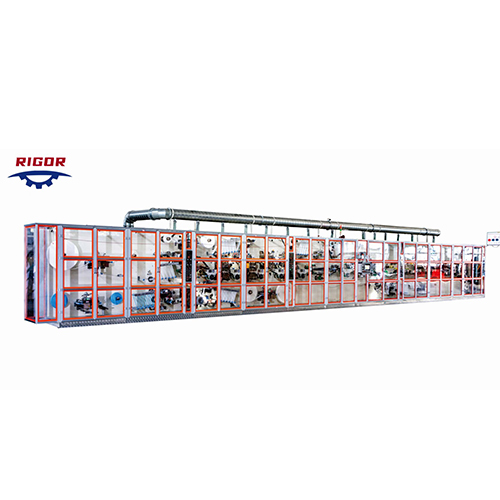Here are some additional details about sanitary pad making machines:
Types of sanitary pad making machines: There are different types of sanitary pad making machines available in the market, including semi-automatic and fully automatic machines. Semi-automatic machines require manual input for some processes, while fully automatic machines can perform all processes automatically.
Production capacity: The production capacity of a sanitary pad making machine can vary depending on the model and specifications. Some machines can produce up to 200 pads per minute, while others may have a lower production capacity.
Quality control: Sanitary pads are a critical hygiene product for women, and their quality is essential for ensuring the health and well-being of the users. Sanitary pad making machines typically include quality control mechanisms to ensure that the pads meet the required standards for absorbency, softness, and hygiene.
Maintenance: Like any other machine, sanitary pad making machines require regular maintenance to ensure optimal performance and longevity. The maintenance requirements can vary depending on the model and specifications of the machine.
Cost: The cost of a sanitary pad making machine can vary depending on the model, production capacity, and specifications. Generally, fully automatic machines with higher production capacities tend to be more expensive than semi-automatic machines with lower production capacities.
Social impact: Sanitary pad making machines can have a significant social impact in communities where access to affordable and hygienic menstrual products is limited. By providing a means of local production of sanitary pads, these machines can help improve access to menstrual hygiene products and promote women’s health and well-being.
In summary, sanitary pad making machines are specialized machines used tomanufacture menstrual pads for women. They come in different types with varying production capacities and specifications. They typically include mechanisms for quality control, require regular maintenance, and can have a significant social impact in communities where access to menstrual hygiene products is limited.
Sanitary pad making machines are designed to ensure the hygiene and safety of the pads they produce.
Here are some of the ways that these machines ensure the hygiene and safety of the pads:
Raw material handling: Sanitary pad making machines are designed to handle the raw materials used to make the pads in a way that minimizes contamination. The raw materials are typically stored in a clean, dry area and fed into the machine using automated systems that reduce the risk of contamination.
Quality control: Sanitary pad making machines typically include quality control mechanisms to ensure that the pads meet the required standards for absorbency, softness, and hygiene. These mechanisms may include sensors that detect any defects or irregularities in the pads, as well as visual inspection systems that check for any visible defects.
Sanitization: Some sanitary pad making machines include sanitization mechanisms that help ensure the hygiene of the pads. For example, some machines may use ultraviolet light or other sterilization methods to kill any bacteria or other pathogens that may be present.
Packaging: Sanitary pad making machines typically include packaging mechanisms that ensure the pads are sealed in a hygienic manner. sanitary napkins machinery The packaging may include individual wrapping or sealed packs, which help protect the pads from contamination during storage and transport.
Safety features: Sanitary pad making machines include safety features that help prevent contamination and ensure the safety of operators. For example, the machines may include air filtration systems that remove any dust or debris from the production area, as well as safety sensors that shut down the machine if any safety hazards are detected.
In summary, sanitary pad making machines ensure the hygiene and safety of the pads they produce by handling raw materials in a way that minimizes contamination, incorporating quality control mechanisms, sanitizing the pads, using hygienic packaging, and including safety features that prevent contamination and ensure operator safety.
